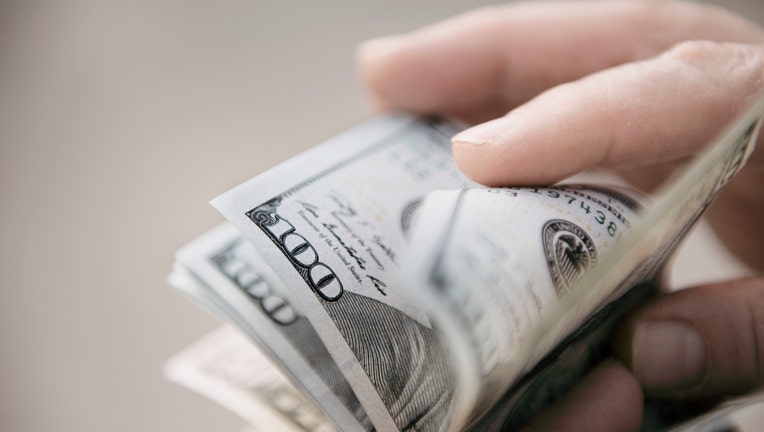Personal loans can help in an emergency, but read this before you apply

Understand the process of getting a personal loan now to protect your finances later. (iStock)
Whether it’s due to a job loss or the uncertainty of the future, making ends meet has gotten harder for many Americans who were impacted by COVID-19. You may have emptied your savings account in an emergency, and you may be considering taking out a personal loan to cover an unexpected expense, such as a medical bill, home or car repair, or funeral, especially since interest rates are at record lows.
To take full advantage of a personal loan and all it has to offer, you'll want to find the lowest rates and best terms available. Online marketplace Credible makes fast funding simple — just enter your loan amount and find rates starting at 4.99% APR instantly.
Getting approved for a loan, however, might cause problems. It’s increasingly important to understand the process as well as what lenders look for before you fill out your application.
1. How do I qualify for a personal loan?
When qualifying candidates for a loan, lenders look at a variety of factors, such as your credit or FICO score. This number helps them determine your creditworthiness by assessing your financial past. Lenders prefer borrowers who have good or excellent scores (700 or higher) and offer them the best terms.
Multi-lender marketplace Credible can show you a variety of personal loans, offering loan amounts from $600 to $100,000. Find your rate instantly by inserting some simple information into this free online tool (with no impact on your credit score).
Your credit history will also impact your qualification success, and it’s partially reflected in your credit score. Lenders want to see that you have a good track record of paying your debts on time and that you’ve held accounts for a long period of time. They also check to see how many new accounts you have opened.
Lenders will also qualify you by looking at your debt-to-income (DTI) ratio, which compares your total debt payments (including credit cards, mortgages, auto, personal, and student loans) to your gross monthly income. If your DTI is less than 40%, you’re more likely to qualify.
And a lender will look at your monthly income, which indicates how you will be able to repay the loan. If you’ve recently been laid off or furloughed, you may have a hard time qualifying for a loan because the bank or credit union won’t be able to establish a clear path to repayment for you.
5 DIFFERENT TYPES OF PERSONAL LOANS YOU SHOULD CONSIDER
2. How much can I borrow with a personal loan?
The amount you can borrow will depend on your credit history, but common offers fall between $1,000 and $50,000 and as much as $100,000 for people with excellent credit. While it may be tempting to apply for a larger amount in case another emergency arises, you shouldn’t borrow more than you need.
It helps to visit Credible and use the personal loan calculator to find the best personal loan rates and how the payment will impact your monthly budget. The monthly bill will reflect the amount you borrow, and if you borrow more than you need, it may make it difficult to make the payment.
Credible can help you find an online lender to determine just how much you can borrow. Just enter your desired loan amount and estimated credit score into this free tool to view personal loan interest rates.
HOW TO FIND THE BEST PERSONAL LOAN FOR YOUR NEEDS
3. What are some other options?
Before you take on debt by applying for a personal loan, weigh all of the options. Is it possible to eliminate some expenses to save money? You should also look for opportunities to generate income that could cover the emergency by selling items or taking on another job. If these options aren’t available, other forms of financing might be better than a personal loan to address your immediate needs.
If your credit is good, you could consider a credit card with 0% APR, especially if you need the money to make a purchase. Zero-interest cards can be an effective way to obtain funds as long as you can make the monthly payment. Visit an online marketplace like Credible to view multiple zero percent credit card options at once.
But be careful. If you don’t pay off the balance before the end of the promotional period — often 12 to 18 months — you’ll have to pay interest that accrues from the start date of the charges.
Before you take on any type of debt to pay for emergency expenses, you should weigh the pros and cons. Personal loans often don’t require collateral, which means you don’t have to put your assets at risk. With today’s current low-interest rates, you can visit an online marketplace like Credible to find affordable personal loan options that fit your budget.
PERSONAL LOAN RATES ARE GETTING EVEN LOWER — HERE'S WHY
However, if your credit isn’t good, you may be charged high interest, making a personal loan an expensive option. And in today’s uncertain economy, a job loss could make it difficult for you to make the payment—even if you qualify for a low interest rate.
Personal loans are one option for getting the money you need during an emergency, and as long as you are thoughtful with their use and pay them back on time, they could be the answer for you.

